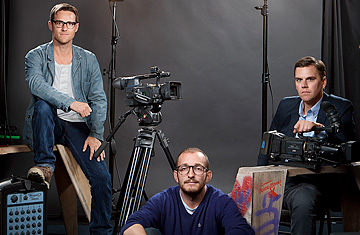
(3 of 6)
Former LRA abductees describe Kony as a messianic sociopath--amiable one minute, murderous the next. Emmanuel Dada, 33, who was abducted from Obo in March 2008 and forced to fight and kill for the LRA before escaping a year later, tells TIME that Kony, a preacher, had a unique take on the Bible: "Kony told us, 'The Bible says if you are going to do good, do good all your life, and if you are going to do evil, do evil all your life. I chose evil, and that's what I will always do.'"
Over the years, the LRA, fleeing intermittent attacks, spread from Uganda to Congo, then South Sudan, then the CAR. Kony raised the cost of confronting him with a series of massacres. "I killed too many to count," says Dada. "They forced me to kill an old man. He was just doing nothing, just sitting there, and I beat him to death with a stick." By the time Bailey, Poole and Russell stumbled across the LRA, the cumulative damage was staggering. Despite the LRA's never having mustered more than a few thousand fighters, the U.N. estimated that the group had killed tens of thousands, abducted tens of thousands more and displaced 1.5 million.
In 2005, Kony became the first individual to be indicted by the newly established International Criminal Court in the Hague. Editing their first film, titled Invisible Children: Rough Cut, back in San Diego in 2003, Bailey, Poole and Russell told themselves they could help bring Kony to justice by showing people what the LRA was doing. "In our world," says Russell, "abducting children, cutting people's faces off, making children eat their friends--that just doesn't happen. We thought, Once people know about this, it's going to end in a year." For greater impact, the three decided on direct distribution. In 2004 and '05, they traveled from high schools to college campuses, screening Invisible Children for hundreds of thousands of students. To translate their swelling support into government action, they linked up with four other college kids who had recently returned from a student exchange to Uganda and had formed a Washington lobby group called the Uganda Conflict Action Network, later Resolve. John Prendergast, founder of the Enough Project, known for its effective use of celebrities like George Clooney and Don Cheadle, became the anti-LRA groups' big gun.
So far, so do-good. But Invisible Children was different. Its founders were young, privileged and goofy, and its DNA was more tech start-up than humanitarian. The three broke the standard advocacy-group rules of conduct too. They horrified established campaigners with films as much about them as the war. They disregarded principles of neutrality and noninterference. They simplified and sensationalized. In particular, while military action was anathema to most humanitarians, the anti-LRA campaigners came to see it as essential. Addressing the need for food and shelter but studiously ignoring a crisis' political cause in the interest of securing access--the traditional aid-worker stance--is merely a way of "managing pain," not fixing it, says Ben Keesey, 29, Invisible Children's CEO since 2006. In Invisible Children's eyes, direct military action was a reasonable, even necessary option.
